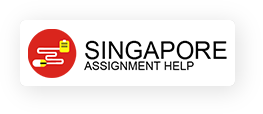| University | Singapore University of Social Science (SUSS) |
| Subject | HFS105: Cognition and Information Processing |
Question 1
Accidents are sudden or severe events that lead to injury or death. The systems approach has been proposed to explain and predict accidents. It assumes that the interactions between components in the system result in accidents occurring. The approach also suggests that some components are more direct causes of the accidents than others.
In this Assignment, you will be writing an 800-word critique of the essay appended below. Specifically, apply the sociotechnical systems contexts learned in this course to discuss the effectiveness of the following essay in describing the sociotechnical systems contexts that surround accidents.
Description of the Sociotechnical Systems Contexts That Surround Accidents
Sociotechnical systems contexts refer to the complex interplay between social and technical factors within an organization or a system. Accidents often occur within these contexts due to a variety of interacting factors. Here’s a breakdown of the sociotechnical systems contexts surrounding accidents:
Hire a Professional Essay & Assignment Writer for completing your Academic Assessments
Native Singapore Writers Team
- 100% Plagiarism-Free Essay
- Highest Satisfaction Rate
- Free Revision
- On-Time Delivery
Organizational Culture
The culture within an organization can greatly influence safety practices and attitudes towards risk. A culture that prioritizes efficiency over safety or where employees feel afraid to report concerns can contribute to accidents.
Work Practices and Procedures
The way work is organized and carried out can impact safety. This includes procedures for maintenance, training protocols, shift schedules, and communication channels. Poorly designed or implemented procedures can increase the likelihood of accidents.
Human Factors
Human behaviour, cognition, and performance play a significant role in accidents. Factors such as fatigue, stress, complacency, and inadequate training can lead to errors or lapses in judgment that result in accidents.
Technology and Equipment
The design, maintenance, and usability of technology and equipment can either mitigate or contribute to accidents. Issues such as equipment failure, poor ergonomic design, or inadequate safety features can increase the risk of accidents.
Regulatory Environment
The regulatory framework within which an organization operates sets standards and requirements for safety. Compliance with regulations can impact the likelihood of accidents, but regulatory gaps or inconsistencies can also create vulnerabilities.
Communication and Decision-Making
Effective communication and decision-making processes are crucial for identifying and mitigating risks. Poor communication channels, hierarchical barriers, or decision-making based solely on short-term goals can lead to oversight or neglect of safety concerns.
External Factors
Factors external to the organization, such as economic pressures, market demands, or natural disasters, can influence safety practices and contribute to accidents indirectly.
Understanding these sociotechnical systems contexts is essential for accident investigation, prevention, and the development of robust safety management systems. It requires a holistic approach that considers the interactions between technical components and social dynamics within the organization or system.
Buy Custom Answer of This Assessment & Raise Your Grades
Looking for Plagiarism free Answers for your college/ university Assignments.
- AVET104 Journey Through the Cell Assignment: A Molecular Adventure into Life’s Inner Workings
- Workplace Risk-Based Assessment 1: Evaluation of Hazards, Accidents, and Safety Compliance
- SRM Reflective Assignment 2: Applying Gibbs Model to Overcome Workplace Report Challenges
- ACLP M1P TAE Written Assignment: Skills Framework & Lesson Plan Design Using Gagne’s and Kolb’s Models
- EGH222 Healthcare Analytics Assignment 2: Predictive Model for Sick Days Based on Employee Demographics and Lifestyle Data
- Sustainability Strategy Assignment: Selected Company Case Study on Addressing Sector Challenges and Driving Behavioural Change Campaigns
- 7WBS2012 Executive Career Development Assignment: Career Pathway & Readiness Post-MBA in Education Management
- CVE2322 Gantry Build Prototype Assignment: Sustainable Civil Engineering Model Using Recyclable Materials
- BMG706 Strategic Quality Change Assignment Report: Enhancing Operational Excellence at any Organization
- CVE2323 Structural Analysis Assignment: Matrix Method & STAAD.Pro Evaluation of Frame Systems

